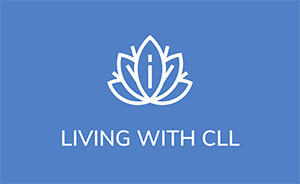A personal story of coming to the end of “watch & wait” and navigating the expanding universe of treatment options.
Part 1 – Am I still on “watch & wait” or not?
I was diagnosed with CLL (13q, mutated, ZAP70 negative) in March 2014 and had been “watch and wait” for over 5 years. This personal story addresses a question that arises often at our Orange County CLL Society support group meetings. When is “watch and wait” over? It also gets into the closely related issue of selecting a treatment.
For a disease with an inexorable but slow progression, the answers won’t be the same for everyone, even when the clinical courses are very similar. In my case, the CBC markers showed unambiguous progression over 5 years, but never gave me the feeling of falling off a cliff. Absolute lymphocyte count (ALC) started at 4800/µL at time of diagnosis, and seemed to plateau after reaching 11,200/µL in June 2018. Meanwhile platelets poked along between 79,000 and 118,000/µL through June 2019 and IgG dropped a bit from 550 to 450 mg/dL. There was never a clear indicator that it was time to “do something”.
That started to change in 2019, when some CBC markers started to look a little more alarming. My absolute neutrophil count, which had been fluctuating between 1400 and 2300/µL from diagnosis through May 2016, began trending lower, between 1000 and 1300/µL. Then in June 2019, there was a reading of 775. Meanwhile, platelets had consecutive low readings of 79,000 and 85,000/µL. Also, I was getting a little more fragile clinically, with upper respiratory infections in January and May. All of these factors led to my getting a repeat bone marrow biopsy in July, my first since diagnosis. This revealed that my cellularity had increased from 40% to 80%, mostly leukemia cells.
This was enough for me to start considering the treatment options offered by my CLL specialist:
- ibrutinib
- venetoclax + obinutuzamab
- ibrutinib + cirmtuzumab (in a clinical trial)
Although I took this very seriously, spending countless hours online reading anything that would help me make a decision, to be completely honest I wasn’t quite convinced. Even as I dove deep into weighing the choices, there was still the lingering hope that some excuse would come along to buy me more time on “watch and wait”.
Part 2 – Weighing the treatment options
So, what was my thought process? The guidance from my CLL specialist was neutral; it really was a matter of personal preference. But the choices were truly across the treatment spectrum, from route of administration, to duration of treatment, and to projected outcomes. Beyond that, the questions of other permutations with these drugs or availability of similar trials was an unspoken source of additional complexity looming in the background. To be thorough, I also needed to understand other treatments that didn’t make it into the top 3.
There really are 2 goals in treating CLL: reduction of cancer cell burden and recovery of immune system function. It’s generally true that the more aggressive the treatment, the worse are the side effects. The presence of CLL in marrow suppresses everything else, including platelets, neutrophils, healthy B-cells producing IgG, and red blood cells. So, while treating the CLL should allow the rest of the marrow to recover eventually, there is the short-term effect of any CLL drug causing further depletion of healthy marrow components. And for me, the issue of these side effects really was a big deal.
One way of categorizing the choices is to think of them as monotherapies or orthogonal therapies. Simply, a monotherapy is one drug, targeting a single protein. Orthogonal therapies target 2 or more proteins. The rationale for orthogonal treatment is that it lessens the chance that CLL will develop mutant clones that are resistant to a single drug, and increases the chance for reaching undetectable minimal residual disease (U-MRD), and the potential for a long-lasting remission. Targets can be intracellular or on the cell surface. Intracellular targets for CLL are Bruton’s tyrosine kinase (BTK) and BCL-2. To reach these targets inside the cell, small molecule inhibitors must be used. So, for BTK there is ibrutinib, and for BCL-2 there is venetoclax. Cell surface targets for CLL are one of the clusters of differentiation proteins, CD20, a molecule common to all B lymphocytes (both normal and malignant), and more recently ROR-1. In general, monoclonal antibodies are utilized to reach these cell surface proteins. So, for CD20 there is obinutuzamab, and for ROR-1 there is cirmtuzumab. I’ve wondered whether there is any rationale for selecting orthogonal therapies based on the location of their targets, such as one on the surface and one intracellular, but I have not found anything to support that. Perhaps notably, that is the most common combination offered.
Going through the options, ibrutinib has a long track record of success, but it would be a “forever” drug. I could anticipate being on it for maybe 4-5 years before doing something else or something in addition. It would not be a cure, as very few patients on ibrutinib reach undetectable MRD. Moreover, I would have to contend with side effects, most significantly in my case with low platelets and the risk of hemorrhage. Seeing many of my cancer support group friends with subcutaneous bruising from ibrutinib, even while having normal platelet counts, was not lost upon me. Could I still go skiing, or would I remove my boots after a day on the mountain and find my ankles to be a bruised-up mess? Ultimately ibrutinib seemed to be a placeholder, almost a modern-day version of “watch and wait”. It’s not a definitive treatment. It would get me in the right direction but wouldn’t be my final destination; kind of like flying to Chicago before changing planes. You can fly anywhere from Chicago.
So, what about the other options? Venetoclax + obinutuzamab was very appealing. It’s fixed duration (about a year for venetoclax and 6 months for obinutuzamab) and potentially offers a good outcome of reaching U-MRD status. But since obinutuzamab binds CD20, a cell surface protein universally expressed on all B lymphocytes, it takes out the good guys along with the bad, wiping out IgG production, at least until the B cells recover. The prospect of being on monthly replacement therapy with intravenous immunoglobulin (IVIG) for a couple of years was very troubling to me. It really boiled down to how aggressive I was prepared to be. If it was all about going for U-MRD, then this would be a great choice. But in my mind, it was so extreme. Here I was with a relatively modest CLL burden, barely across the threshold for ending “watch and wait”, and this would mean going into the fight with guns blazing. Thanks, but I preferred a gentler approach. Lastly, there was the clinical trial of ibrutinib + cirmtuzumab to consider. Cirmtuzumab is a very promising drug, targeting the CLL cell surface protein, ROR-1, but without the collateral damage to good B lymphocytes, as with obinutuzamab. The time course is a bit grueling, with up to 15 months of mostly monthly infusions, but it seemed like a small inconvenience for the benefit of a more targeted therapy. Although there’s not much of a track record yet, as an orthogonal treatment there is the very real prospect of reaching U-MRD. So, I signed up for the trial. But wait, you’re thinking, I thought you wound up in Chicago?
Part 3 – Detour?
Well, there is plot twist. But first, there was a clinical event that completed the end of my “watch and wait” story. As I said, I was still a bit wobbly on all of the options, but as I waited for the trial testing in late 2019, I was still getting follow-up CBCs, which showed that my various markers had bounced back a bit…maybe I could watch and wait until after the holidays. Well, that all came to a screeching halt on November 6th, the morning I awoke in the middle of the night with right-sided anterior chest wall pain. I rolled over and managed to get back to sleep, but it was still there when I awoke for the day. Very strange…I hadn’t been feeling well for a couple of days, just taking ibuprofen to relieve some ill-defined aches, but didn’t have any cough, congestion, sore throat, or any other localized symptoms. Could this be pneumonia? Well, maybe I should take a Z-Pak before going to work. So, I did. As a radiologist, you don’t have to guess what I did next, and later that morning I had my answer: a chest X-ray showed a right middle lobe pneumonia. Still not feeling too badly except when I took a deep breath, I continued working (if I can speak and use a mouse, I’m good). Same the next day. But as I lay awake in the middle of the night after that, I realized that my tidal volume (the amount of air I could exchange with each breath) was ridiculously low. I simply could not breath more deeply without causing intense chest wall pain next to the pneumonia. That was my “aha” moment. I was not going to go through this again. “Watch and wait”, at least in my mind, was officially over.
But back to the plot twist. I completed my preliminary testing for the clinical trial on November 25th, including CT scans from my neck through the pelvis. I never had observable significant lymph node enlargement in all the years since diagnosis, but those are just the ones near the skin surface. Surely with a marrow 80% filled with leukemia and an ALC of ~12,000/µL, there would be at least 1 qualifying lymph node (at least 2 cm) somewhere in my body. Well, as I found out on November 26th, there wasn’t. After all that, in a moment, it came to an end: no clinical trial participation for me.
So, I was back to square 1 in terms of choosing a treatment. But meanwhile the FDA added a wrinkle: a new drug had been approved. Acalabrutinib, a 2nd generation version of ibrutinib, was now available. It’s still a monotherapy, with similar expectations for long-term and noncurative treatment, but with an appealing safety profile. The anti-platelet effect of ibrutinib is significantly less with acalabrutinib and, at least in theory, it should have fewer “off-target” effects on T-cells, an important component of a healthy immune system. Moreover, it doesn’t foreclose the possibility of a more definitive treatment should the circumstances or my personal inclinations change. In the same way that ibrutinib was a placeholder, acalabrutinib also represented a way to treat but do so in a way that wasn’t too harsh on my immune system. I was still flying to Chicago, only to a different terminal.
P.S. I started acalabrutinib (Calquence®) on Feb 4th.
P.P.S. I went skiing on March 10th and 12th, and my ankles did just fine!
David Lefkowitz MD is a neuroradiologist living in Los Angeles with his wife, Kathy, and dog (a bichon frise), Anderson Cooper. They have been married for 44 years and are in their 16th home, having lived in Charleston SC, Miami FL, Omaha NE, Baltimore MD, Scottsdale AZ, and Corona del Mar CA, although they remain loyal fans of the Baltimore Ravens. He was on the faculty at Creighton University and then the University of Maryland for 20 years before entering private practice with SimonMed Imaging. He is a life-long skier who finally qualified for discounted senior lift tickets last year. He hopes to still be skiing when he qualifies for free tickets in 14 years.
Originally published in The CLL Society Tribune Q1 2020.


















